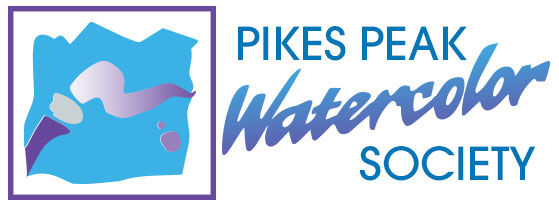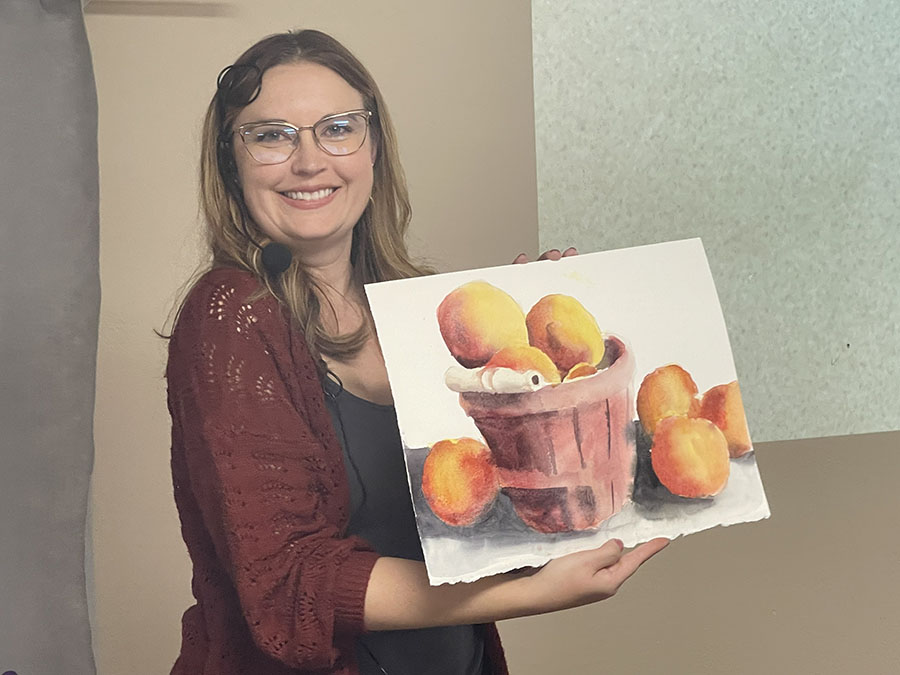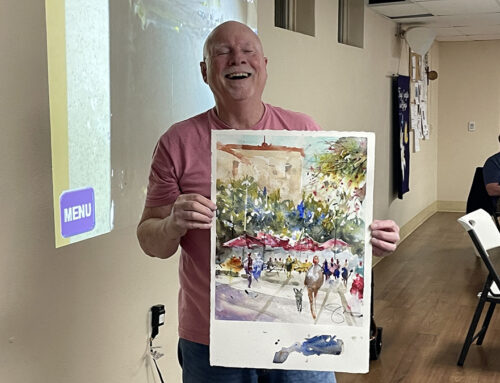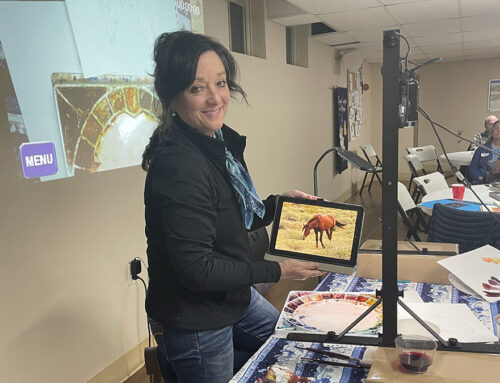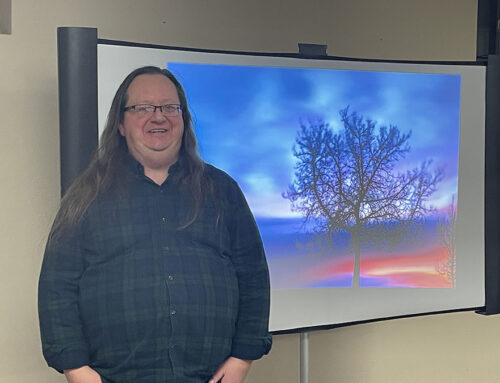A Lesson in Values
Lisa Riannson is an award-winning artist who is known for her realistic watercolors. Her work has been exhibited in many national juried exhibitions in Colorado and New York. Lisa is also a sought after instructor, teaching watercolor and acrylics classes.
Have you ever struggled with your painting looking flat or blah? It just doesn’t seem to have that wow effect you were hoping for? Well, Lisa taught us all how to fix that!
The trick to making your painting pop is, simply put, learning how to check your values by taking a black and white photo of it!
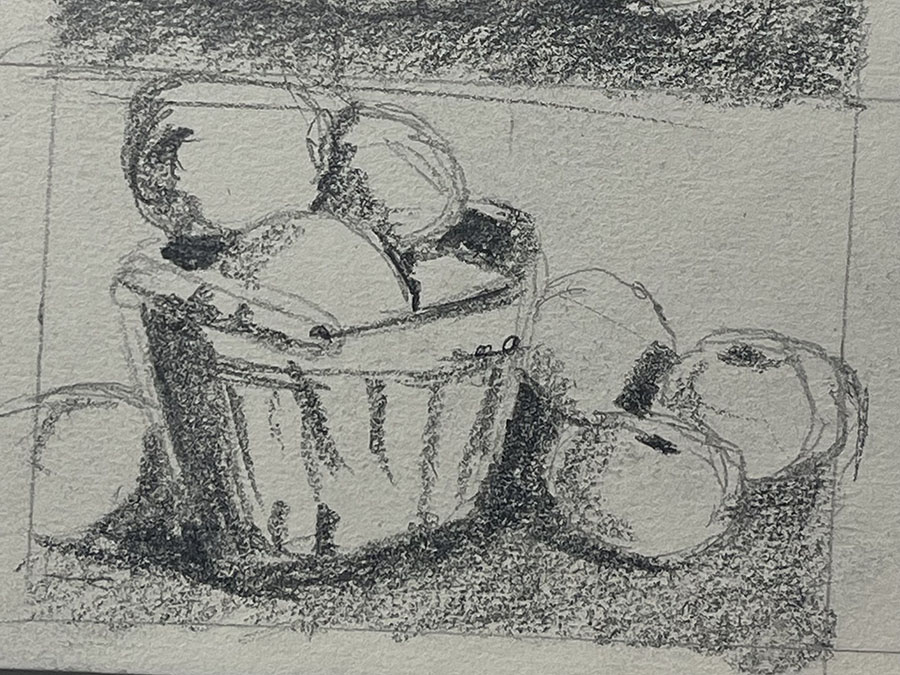
Lisa is a strong believer in making a value sketch before you put paint to paper. This then works as a “road map” to know where your lightest, darkest and medium values must go, along with making composition adjustments, if needed, before up start painting. She then selects her paint colors and makes a swatch of each one.
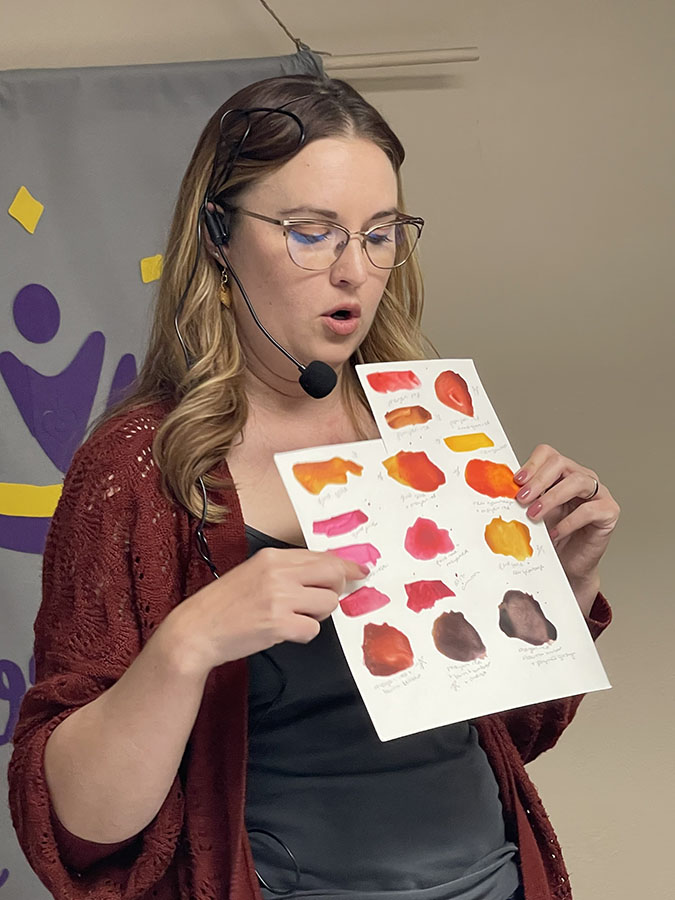
Lisa likes to paint on Arches Hot Press paper, which has a smooth surface. She uses Daniel Smith and Winsor Newton professional watercolors and uses Princeton synthetic brushes.
For tonight’s demonstration Lisa painted a basket of peaches. She started out painting very wet in the lightest values of the peaches and basket. Her second layer of color was darker, blending it out with clear water to start forming the shapes.

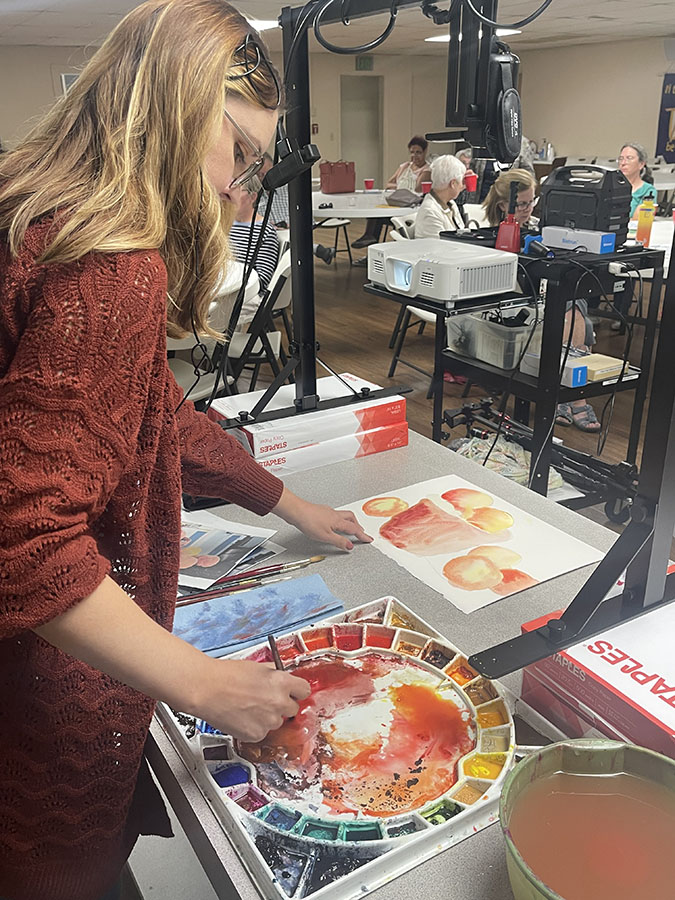
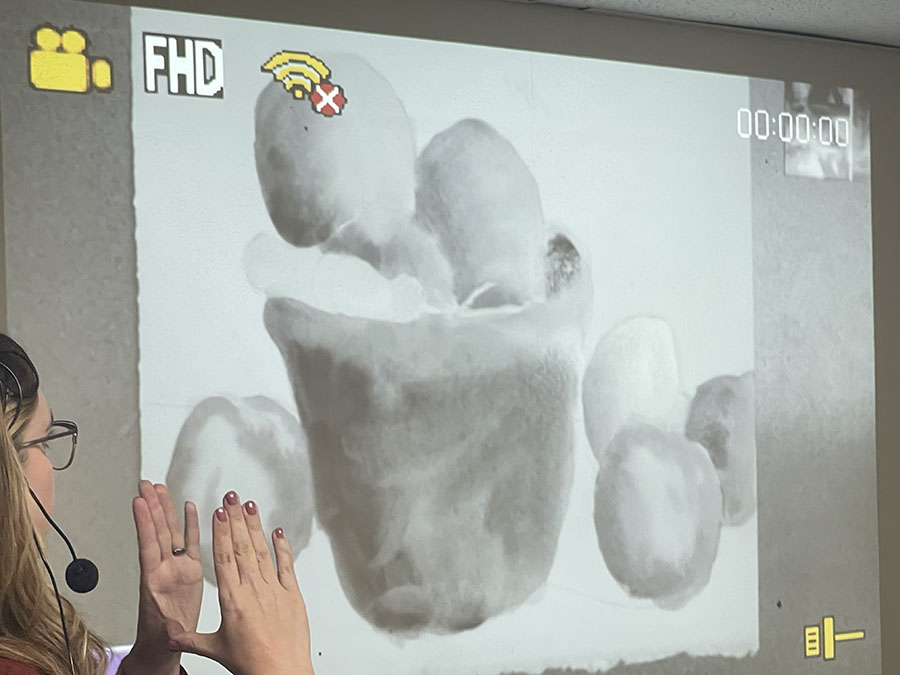
As Lisa builds up her layers of colors and form, she frequently checks the values of her painting by taking a photo on her phone, then converting it to black and white.
She also said that if you ever get stuck or have a mid-paintng slump, add some darks and some details. This awakens the painting and gives it the depth, contrast and values needed. It also makes the painting start to look and feel more finished.
Lisa loves mixing her dark colors with Indigo combinations. Indigo with Payne’s Grey, Indigo with Alizarin Crimson, Indigo with Veridian, or other combinations of colors.
Always be cautious when adding more colors to your painting. If the painting is too wet or damp, you risk the chance of creating blooms. Lisa has a couple of ways to check how dry her paper is before she continues adding color. The first is to hold your painting up horizontally level with your eyes. If the paper still has a sheen, it might be too wet to add more layers of color. Let it dry! Her other trick is to lightly lay the back of her fingernail on the painting. If it feels cool, your paper is still damp.
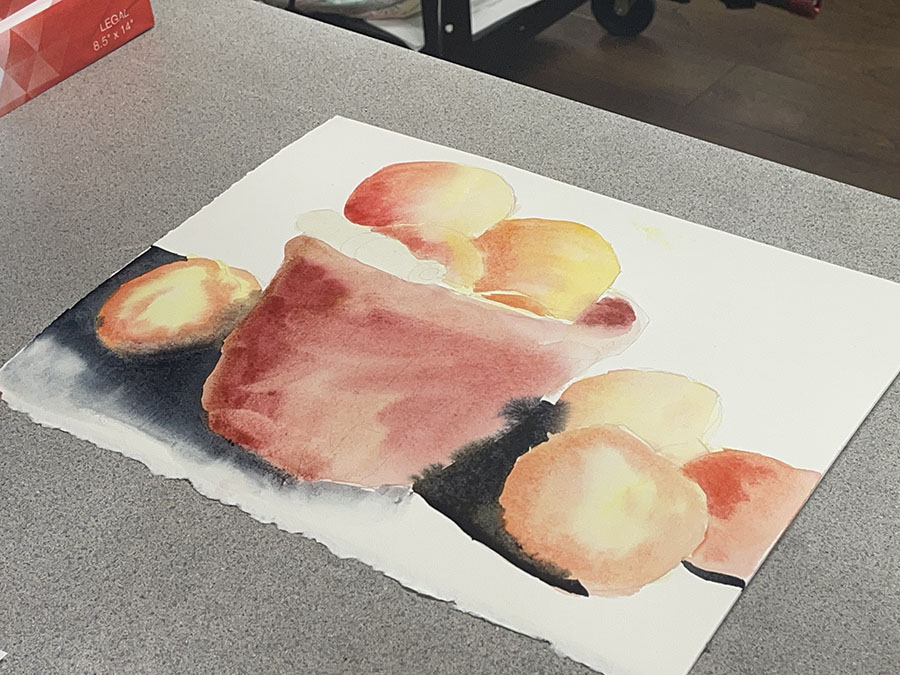
Lisa reminds us, we are artists! And, as an artist we can do whatever we want! Leave something out, add something, change or rearrange the composition. These little things can make or break a painting! Paint with a limited pallet. Paint with just one color. You don’t always have to paint exactly what you see!
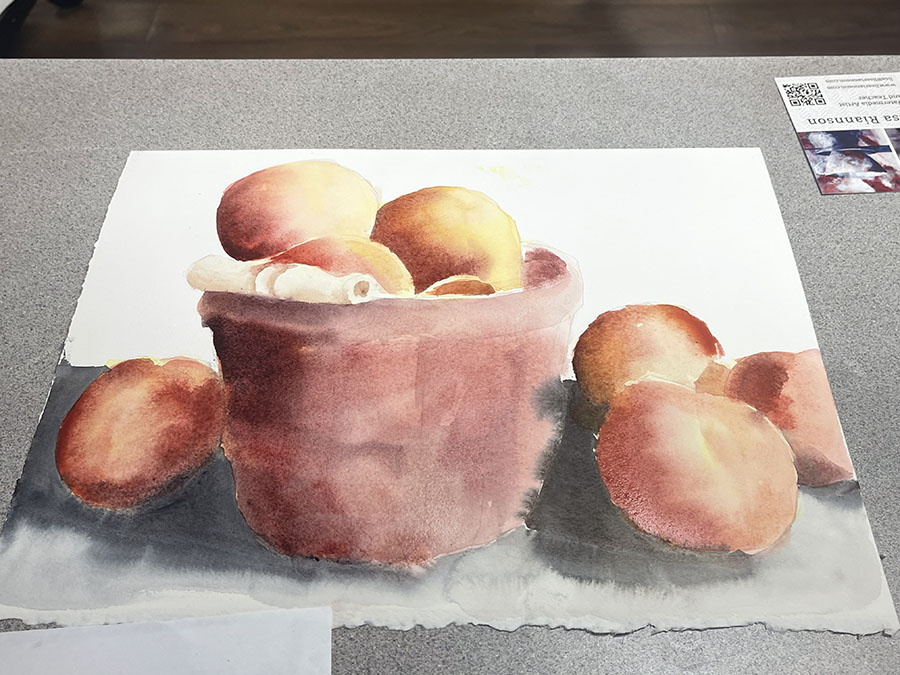

How do you know when your painting is done?
The age old question! It’s easy to “overwork” a painting and then you’re not happy with it. Lisa had a few suggestions on how to know when it’s done.
1. Take a photo, convert it to black and white and then check the values.
2. Walk away from your painting for a few hours. It’s easy to get tunnel vision when you work on it too long.
3. Prop your painting on a shelf and look at it from a distance. Is it too light, too dark in one area, is it balanced in values?
Above is Lisa’s finished painting and her black and white value image.
If you’d like to know more about Lisa, her art and classes please visit her website.
